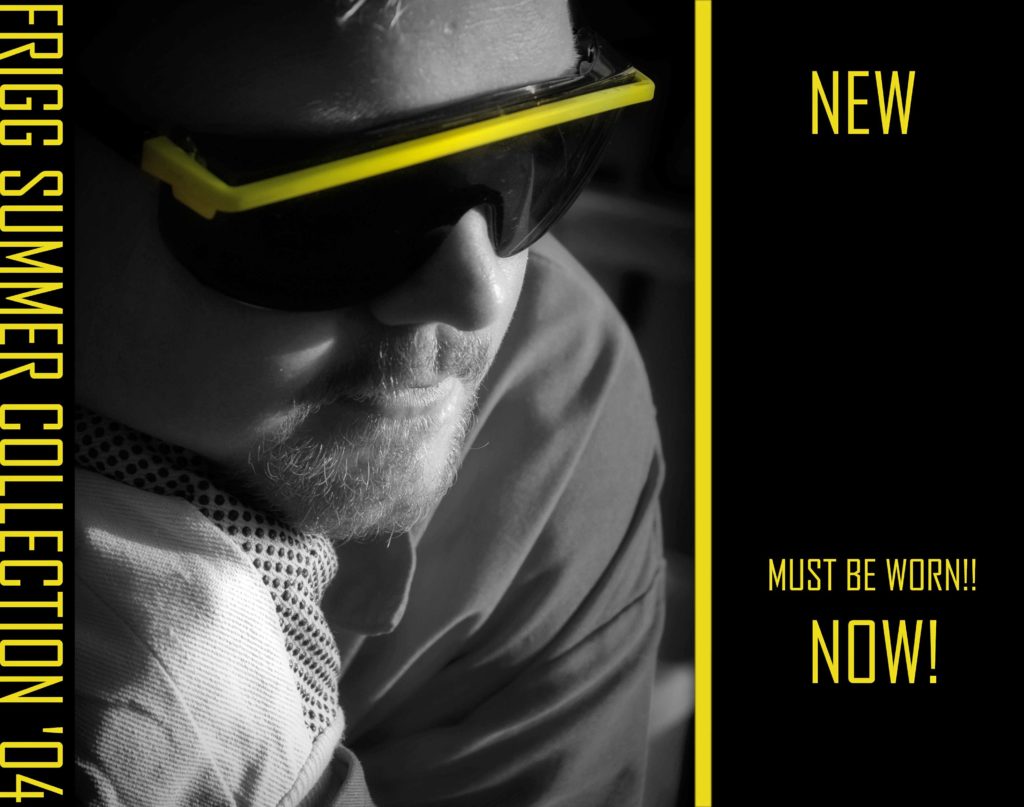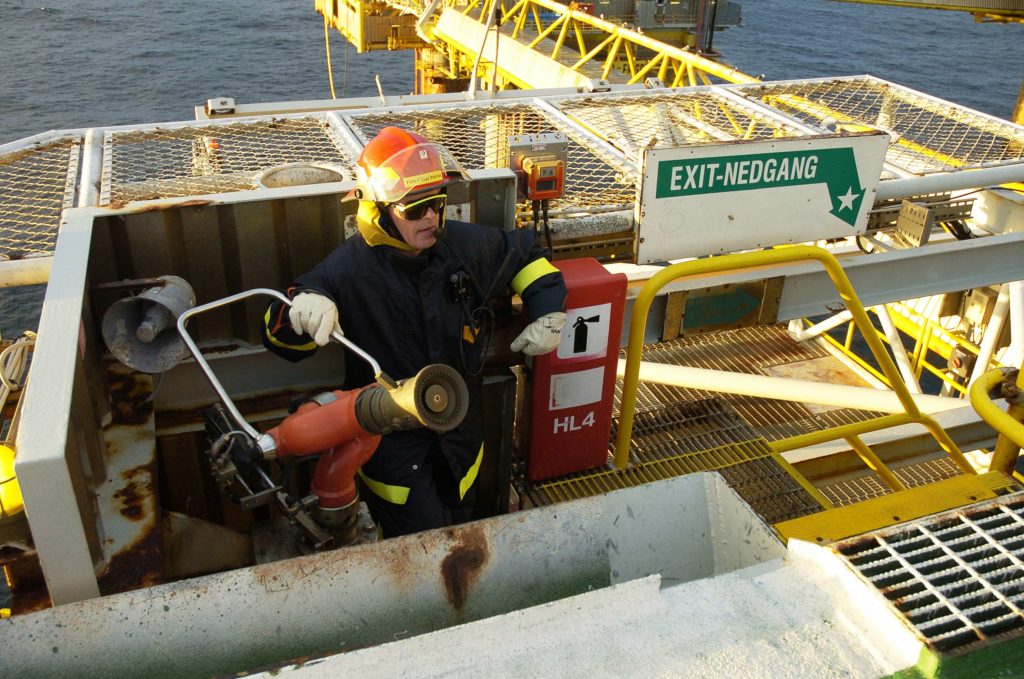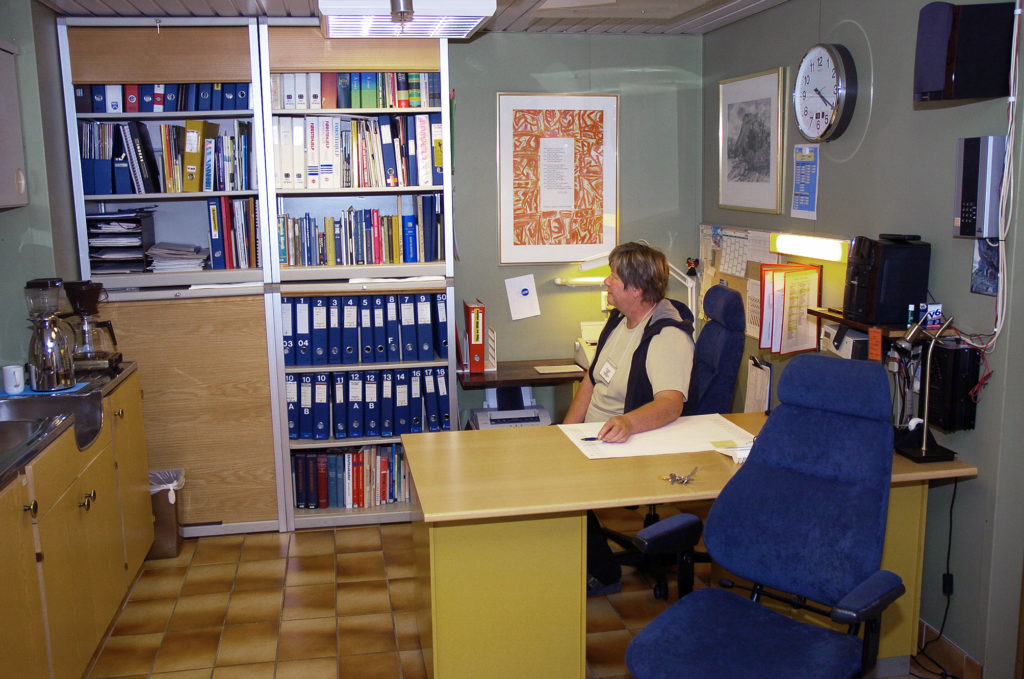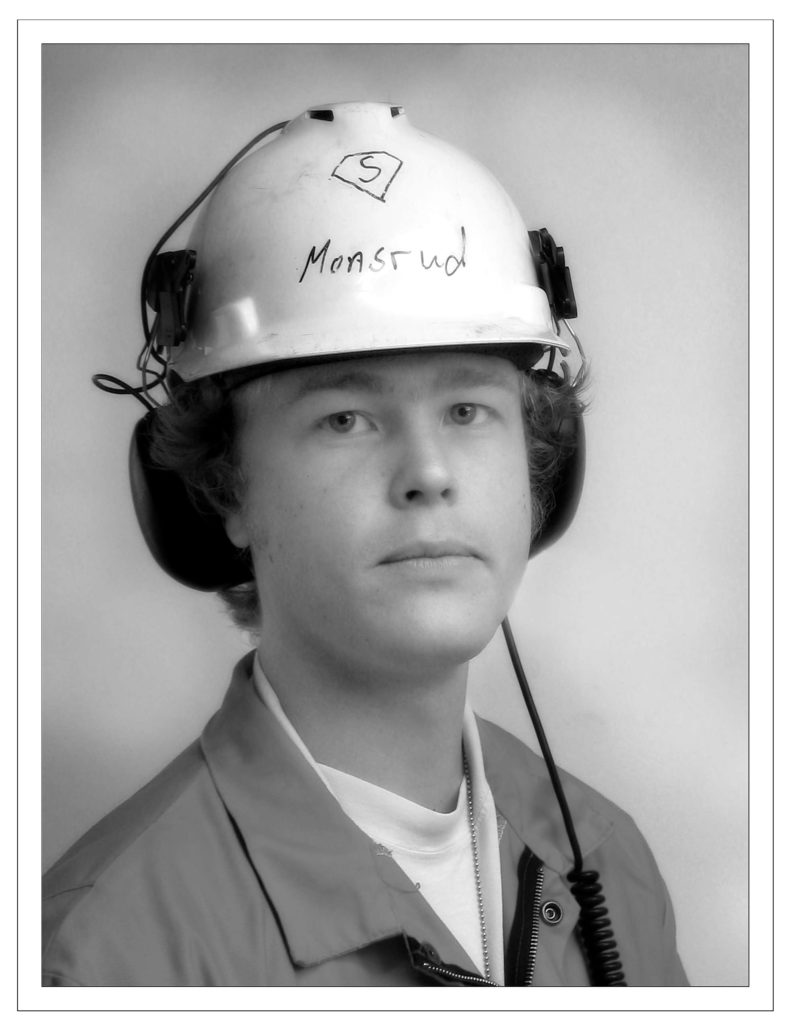Safety

Safety supervisor
 Sikkerhetsavdelingen, arbeidsliv,
Sikkerhetsavdelingen, arbeidsliv,The safety supervisor coordinated safety work. This job largely involved checking procedures and ensuring that they were observed. The work permit form was an important tool in that respect. On it, the safety supervisor entered what precautions had to be taken, such as fireguarding and isolation of equipment. The permit system ensured that everyone was informed about what types of work were under way. It was particularly important that management and the control room were well briefed. The safety supervisor organised various campaigns and training programmes with the focus on safe working. An important job was the introductory course for new arrivals on Frigg. They were given a briefing on safety aspects and taken on a tour of important safety-related locations, such as the lifeboats and the ladder down from the platform, and each person was assigned to a lifeboat station.
 Sikkerhetsavdelingen, arbeidsliv,
Sikkerhetsavdelingen, arbeidsliv,Close collaboration was maintained by the safety supervisor with the safety delegates and the working environment committee. Weekly safety delegate meetings were held, with the safety supervisor in the chair. Initiated in 1978, these meetings functioned as a working environment committee on the field. Those present included the offshore installation manager, the safety supervisor, the main safety delegate and a safety delegate from each of the contractors with assignments on the field. The nurse acted as secretary for these meetings1.
To begin with, the safety department had an operational responsibility for safety. Its work was reorganised in 1986, with the production operators made responsible for safety while the safety department concentrated on quality assurance. This called for a lot of training. Production operators were taught how to think safety, and former safety assistants were trained to work as production operators.
A number of safety exercises were run, reports former field manager Christian Hansen. “We once tested what would happen if an offshore installation manager went off their head,” he says. “It turned out that I was able to carry on for a long time. I had to start sending helicopters into prohibited zones before anyone intervened to stop me.”
Nurses
 Sikkerhetsavdelingen, arbeidsliv,
Sikkerhetsavdelingen, arbeidsliv,All installations staffed around the clock had to have a state-registered nurse. They dealt with everything from first aid to advanced medical treatment in consultation with a doctor on land. The doctor was the boss professionally, but the administrative decisions were ultimately taken by the offshore installation manager or field manager. The nurses also took the initiative on various forms of preventive work, such as health campaigns, and provided first-aid training for various groups. They had to be on call in their free periods.
The nurses on Frigg had a diverse background, which differed from other fields where only those with an anaesthesia qualification were appointed. One of the Frigg nurses had been in the army and was familiar with routines for building up stocks and for responding to emergencies. Another had worked on cruise liners, with experience of constructing records and documentation routines. Svanhild Rolfsen was the first female nurse appointed, in 1977, and the first woman with a permanent offshore job on the Norwegian continental shelf.
A platform forms a microcosm of society, with a corresponding range of illnesses and accidents. The number of injuries on Frigg was stable at a relatively low level, but rose during periods of development work. A typical injury involved a foreign body in the eye, and various methods and instruments were developed for removing these. Rolfsen reports that they had to improvise and come up with solutions which worked. Old dental drills were used to get dust out of an eye, for instance. The old type of such drills proved very suitable for this job.
Rolfsen was a nurse on Frigg from 1977 until after the field shut down. “I worked with everything from first aid to advanced medical treatment,” she recalls. “We were linked to a 24-hour medical service on land staffed by doctors, which we could call and consult. We jointly agreed on the treatment to be given and the possible need for transport to land. In practice, we were on call around the clock on the platforms.”
 Sikkerhetsavdelingen, arbeidsliv,
Sikkerhetsavdelingen, arbeidsliv,To begin with, the use of protective equipment was largely up to the individual offshore worker. Improved routines and working environment legislation were eventually introduced. Elf took safety seriously from the start, and a huge amount of work was devoted to following up, improving, informing and renewing work routines, procedures, information and equipment.
“I’m proud that my employer has had a fine attitude to safety from the early days,” says Rolfsen. “I believe we’ve avoided many injuries and incidents for that reason. I’ve worked offshore for 29 years, and don’t think I could have managed that if I’d felt that safety wasn’t given top priority in my workplace.”
In addition to monitoring and treating acute illnesses and injuries, the nurses opted to follow up the general health of the workforce through campaigns. These covered such activities as information about and registration of asbestos, and campaigns on intestinal and prostate cancer, hearing, diet and exercise, ergonomics, and lifting and carrying. In addition came surveys of the psychosocial working environment.
The nurses also involved themselves in various welfare measures. Elf facilitated such work by allocating a large budget to welfare, and the basis was laid for a good social environment. Measures included bingo on each offshore tour. Welfare measures also covered contractor personnel on the same terms as Elf’s own employees.
